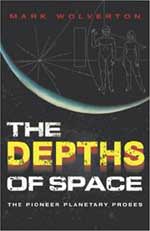
The Pioneer space probes, brought to fruition by the staff of NASA’s Ames facility, were a series of eight very similar craft. Their main claims to scientific fame included a litany of firsts in space travel and exploration. Though these probes began in the same era as the ‘all encompassing’ manned lunar flights, they happily and necessarily served a different purpose. Happily as in people realized that manned space flight is not the best tool for exploration; there were cheaper mechanical probes. Necessarily as in Ames had just been absorbed into NASA and needed to create a niche for itself or be in danger of disappearing altogether. Thus began the Pioneer odyssey.
Prior to absorption, Ames had been an effective and very responsive academic styled institute. Its staff solved problems very well but expected the problems to be handed to them on a silver platter. At that time, under NACA, they were considered some of the best theoreticians in their field. On becoming a part of NASA, Ames couldn’t sit back when proactive facilities like JPL were overwhelming the spot light. Charles Hall, an Ames staffer, took on the challenge of altering the mind set at Ames as well as the altering the beliefs of the bureaucrats at NASA. With convincing financial and technical arguments, he demonstrated that Ames could effectively manage the design, assembly, test, and operation of a space probe, even if it was to be the first to assess conditions outside of the Earth’s protective shield. Hall turned out to be the right person at the right place and at the right time for his arguments succeeded and Ames began a new direction as space craft designers and builders.
Much of the success of the Pioneer program was directly tied to Hall. Long before ‘faster, better, cheaper’ became the mantra in vogue, Hall lived and breathed this axiom. Technically he did it in two ways. The first way was to have a clearly defined purpose for each probe and each sub-system within the probe. He then fixated on this purpose, and only monumental persuasion convinced him to accept any modifications or redesigns. In consequence, the typical cost run ups and time over runs were all but absent. The second way Hall accomplished this was to stay true to the KISS (keep it simple stupid) principle. Where at all possible, only proven technology and components were used. Simple solutions, such as stabilizing a satellite with spinning, won out over complex ones that used thrusters in each of three axes. Hall’s other forte aside from program management was his political skill, especially with principle investigators. Whether refereeing the battles for the satellites’ download bandwidth or brokering for ever scarce time on the Deep Space Network (DNS), Hall had a knack of finding an amenable solution that kept his program on time and on target. As much as these were and are the better styles of management, when all was said and done, it was the final product and its success that vindicated Hall’s style and direction.
Pioneer probes 6 through 9 were launched between the years 1966 and 1969. They had a design minimum lifetime of six months. However, as 1970 rolled around, Hall was using all these in operating the first space based weather monitoring network. Pioneer 9 still operated up to 1983! Pioneer 10 and 11 were, of course, the well known path finders; the first to ever reach out beyond Mars. Their mission design was to reach Jupiter and assess its surroundings. Yet, both these probes were allowed and able to travel on and were functioning well past Pluto. Only recently has their signal strength gotten so low that the DNS is unable to detect it against background. This is testament enough for the abilities of Hall and everyone else who worked on the Pioneer missions. However, to complete the picture, don’t forget Pioneers 12 and 13. They were directed inwards, to Venus where they provided some of the best observations and measurements of Venus to date. All these Pioneer probes had Hall’s guiding light and all had remarkably successful missions.
Mark Wolverton’s book The Depths of Space provides a very readable and pleasant historical look at some of the significant issues surrounding the Pioneer space probes. Though perhaps by the end a bit repetitious in its accolades, it contains excellent views into some of the significant trials, tribulations and credos for humankind’s first spacecraft to go boldly where none had gone before. Yes, there may have been sketches of naked humans placed upon them but these probes were much more than mere messages in a bottle.
Read more reviews and buy the book online from Amazon.com.
Review by Mark Mortimer
